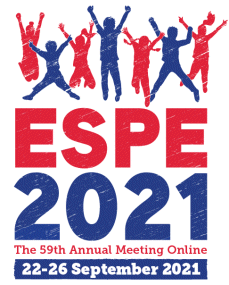
59th Annual ESPE (ESPE 2021 Online)
Online,
22 Sep 2021 - 26 Sep 2021

The 59th ESPE Annual Meeting will now be held online in September 2021.
Controversies
Should children with isolated idiopathic GHD be retested in early/mid-puberty, rather than wait until adult height is achieved?
hrp0094con2.1 | Should children with isolated idiopathic GHD be retested in early/mid-puberty, rather than wait until adult height is achieved? | ESPE2021
Should children with isolated idiopathic GHD (IIGHD) be retested in early/mid-puberty, rather than wait until adult height is achieved? (PRO)
More than 60% of patients with IIGHD have normal GH responses to stimulation when retested at the end of growth, and more than 40 % when retested between one year from the start of treatment and mid puberty. This is probably due to the poor diagnostic accuracy of GH stimulation tests and IGF-I measurement. These are strong arguments in favour of early retesting to avoid the burden, cost and potential side effects of unnecessary treatment. There should be no risk of early termi...
hrp0094con2.2 | Should children with isolated idiopathic GHD be retested in early/mid-puberty, rather than wait until adult height is achieved? | ESPE2021
Should children with isolated idiopathic GHD (IIGHD) be retested in early/mid-puberty, rather than wait until adult height is achieved? (AGAINST)
The many false-positive diagnoses of IIGHD do not automatically imply that re-testing is needed. Instead, the diagnostic procedure should be improved. Still, re-testing of children can be useful. Regarding the timing, re-testing within 1-2 months would only extend the diagnostic procedure. Re-testing after one year may be a useful option if the growth response appears insufficient. The current approach of re-testing at near-adult height (NAH) is associated with highest GH wast...



